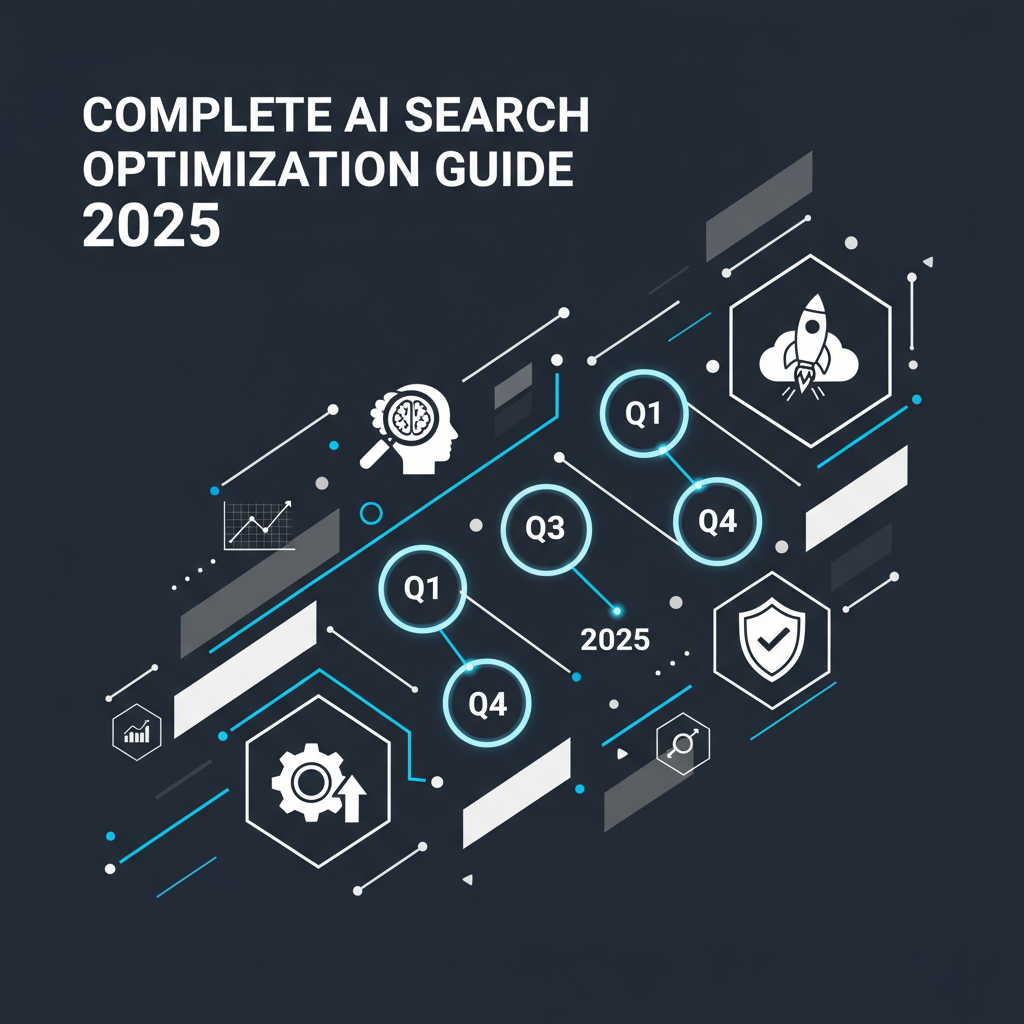
GEO Implementation: A Step-by-Step Guide for Enterprise Organizations
Overview:
Implementing Generative Engine Optimization (GEO) at scale can seem daunting for large organizations. But with the right framework, enterprises can integrate GEO into marketing operations systematically—ensuring search visibility in AI-driven environments. This guide breaks GEO implementation into seven practical steps, emphasizing operational excellence, cross-team execution, and measurable outcomes.
Step 1: Executive Buy-In & Goal Setting
-
Educate stakeholders on why GEO matters: tie it to strategic goals like maintaining visibility, capturing AI-driven traffic, and protecting market share.
-
Set clear objectives: e.g., “Appear in top 3 AI-generated results for 50% of priority queries by Q4.”
-
Assign a GEO project lead (SEO director, Chief Digital Officer, or equivalent).
-
Form a cross-functional task force including SEO, content, engineering, PR, and data analytics teams.
Step 2: Baseline Audit
Conduct a full audit to assess AI readiness:
-
Content Audit: Identify high-value content. Does it answer core customer questions? Is it structured and comprehensive? Spot gaps and create a list of missing assets.
-
Technical Audit: Check schema markup, page speed, mobile readiness, crawlability, and site structure [30]. Ensure FAQ, product, and review schema are in place [83].
-
AI Visibility Audit: Test queries in Bing Chat, Google SGE, and ChatGPT browsing. Document mentions of your brand vs competitors. This provides your baseline AI share of voice.
Step 3: Content Enhancement & Creation
-
Enhance Existing Content:
-
Add concise summaries (one-paragraph answers for AI quoting).
-
Include FAQs and authoritative references [84][85].
-
Structure pages with clear H2/H3 subheadings for AI scanning.
-
-
Create New Content:
-
Fill audit-identified gaps.
-
Develop “best of,” comparison guides, and listicles—frequently cited formats in AI answers (~32.5% of sources) [42].
-
-
Implement E-E-A-T: Highlight expertise through author bios, case studies, and original insights to build authority and trustworthiness.
Step 4: Technical Implementation
Work with IT and engineering teams to build an AI-friendly infrastructure:
-
Deploy schema markup broadly (HowTo, FAQ, product, organization, etc.) [83].
-
Ensure proper crawling and indexation (including XML feeds for Q&A).
-
Optimize for AI scanning: fast load speeds, clean HTML, modular content blocks [37].
-
Explore data feeds/APIs for product info or knowledge panels—future-proof for AI plugins.
-
Enhance analytics to detect AI referrals (e.g., user agent monitoring or tagging Bing Chat traffic).
Step 5: Authority Building (Digital PR)
Boost digital trust signals with coordinated PR and outreach:
-
Secure expert mentions and guest articles in high-authority publications [32].
-
Participate in communities and forums (StackExchange, Quora, LinkedIn) [86].
-
Publish research reports or indices that others cite, seeding AI training data.
-
Focus on earned backlinks and citations through authentic thought leadership—not outdated link schemes.
Step 6: Training & Process Integration
Sustainable GEO requires process integration:
-
Train content creators to structure content for AI: clear answers, FAQs, authoritative citations.
-
Update content brief templates to include AI-specific elements: “What question are we answering?” and “What schema applies?”
-
Add GEO checkpoints in workflows: before publishing, confirm “Can an AI easily extract this answer?”
-
Upgrade SEO tools to include AI monitoring features, where available.
Step 7: Monitoring & Optimization
-
Track AI visibility: Repeat AI audits quarterly to measure brand presence vs competitors.
-
Measure traffic & leads: Watch for growth in direct/unattributed leads that may come from AI-driven zero-click influence.
-
Adopt new KPIs: Count citations in AI outputs, branded mentions, and inclusion rates [87].
-
Iterate: If competitors dominate a topic, analyze why and update content depth, PR reach, or schema to close the gap.
Why It Works at Enterprise Scale
This structured, repeatable process shows that GEO isn’t a black box—it’s an extension of existing SEO and digital operations, with added layers for AI readiness. The focus on cross-functional teamwork, documented workflows, and measurable benchmarks ensures sustainable enterprise-wide adoption.
By following this playbook, organizations can safeguard visibility, attract high-quality AI-driven traffic, and build a durable competitive edge in the new AI-first search ecosystem.
